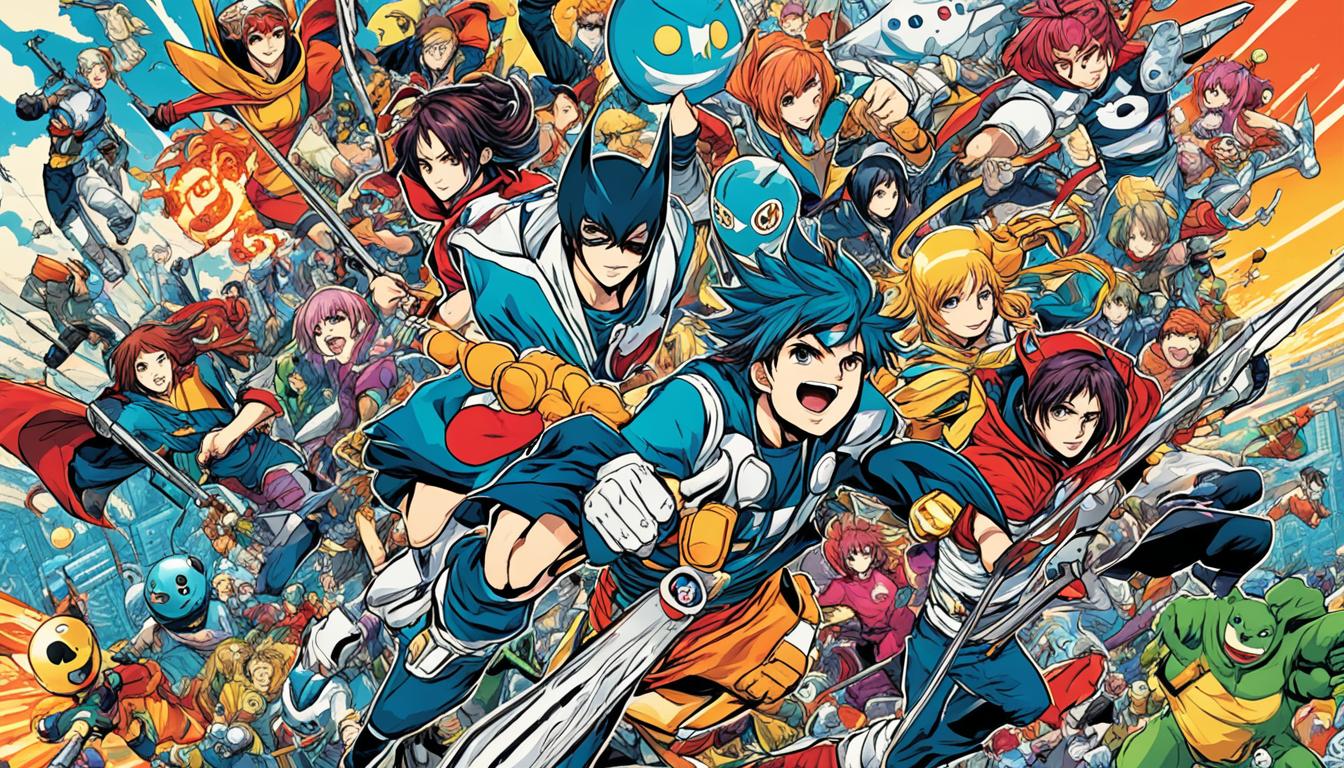Did you know Otaku culture started in Japan but goes way beyond anime and manga? It’s about a lot more, like video games, technology, fashion, and even trains. This culture has millions of fans, both in Japan and across the globe. They enjoy deeper interests beyond just what’s on the surface.
Young people, especially those in their teens and early 20s, find a sense of belonging in this lively culture. The word “Otaku” originally had a negative meaning when it was first used in the 80s. Now, fans use it with pride to show they share the same loves and hobbies.
There’s even special vocabulary that shows how unique Otaku culture is. Words like Kawaii (lovely), Senpai (mentor), and Waifu (fictional character crush) are common. Such language reflects the depth of this community’s conversations.
The Czech Republic has become an unexpected hotspot for Otaku. Here, more than 200,000 people love manga and anime. A large portion, 10%, are active in their Otaku pursuits, enjoying these forms of entertainment daily. This shows how influential Otaku culture truly is.
Cosplay, dressing as favorite characters, is key in Otaku culture. Fans enjoy spending on items like posters and costumes. They meet casually and at big events, like conventions. These gatherings celebrate their shared interests and allow fans to show their love.
Otaku culture is now much bigger than just anime and manga, reaching into diverse and profound areas. We’ll explore the intriguing world of Otaku further, covering its unique locations and varied interests. Plus, we’ll dive into the growth of the Czech community, its resistance subculture, and more.
Key Takeaways:
- Otaku culture encompasses a wide range of interests, extending far beyond anime and manga.
- Teenagers and individuals in their early 20s are the primary audience of Otaku culture.
- Otaku vocabulary includes terms that reflect the unique aspects of the subculture.
- The Czech Republic has experienced significant growth in its otaku subculture, with thousands of active fans.
- Cosplay is a prominent aspect of Otaku culture, allowing fans to express their admiration for characters and connect with like-minded individuals.
Exploring Akihabara: The Hub of Otaku Culture
Akihabara, in Tokyo, is a lively area drawing otaku fans from far and wide. It’s famous for its many otaku spots that help manga, anime, and video game lovers feel at home.
Highlighting Akihabara are its bustling tech shops, some with seven floors. They offer tech from smartphones to cameras. Yodobashi Camera, a well-known store, is where tech-loving otaku find their heaven.
Akihabara is also big on arcades, perfect for game lovers. These arcades have games for every taste, from vintage to the newest consoles. Whether you like fighting or retro games, you’ll find it here.
For those into models, Akihabara is a dream come true. Shops like Amiami have all you need: plastic kits, figurines, and more. It’s the perfect place to turn your favorite characters into real collectibles.
For anyone wanting a special Akihabara keepsake, the Gashapon Hall is a must. Here, capsule-toy vending machines offer unique finds. It’s a fun way to take a piece of otaku culture home.
Akihabara shows off a wide variety of otaku interests. You can see dolls, board games, and even train and military items. There are also Pokémon cards and cosplay-themed cafes.
The Akihabara tour aims to dive deep into otaku culture. By learning about Akihabara’s different aspects, visitors gain a new understanding. This helps them appreciate the passion of otaku fans and the area’s 20-year reign as otaku culture’s heart.
The tour lasts 3 hours and welcomes up to 10 people for a close experience. Children up to 5 years old can join freely, making the tour great for families too.
The tour is in English by default, for a global audience. Akihabara is known to attract young foreign visitors, given its otaku-friendly reputation.
While meals and game fees are not covered, Akihabara has a lot to offer food-wise. Themed cafes, tasty street food, and Japanese meals await visitors.
To sum it up, Akihabara is the heart of otaku culture, a must-see for fans. With its varied offerings, from tech and games to models and souvenirs, it’s a paradise for otaku.
Nakano Broadway: A Haven for Otaku Collectors
Looking for a paradise of anime merchandise? Nakano Broadway in Tokyo is the spot. It’s packed with figurines, manga, video games, and souvenirs. This place satisfies even the biggest otaku fans.
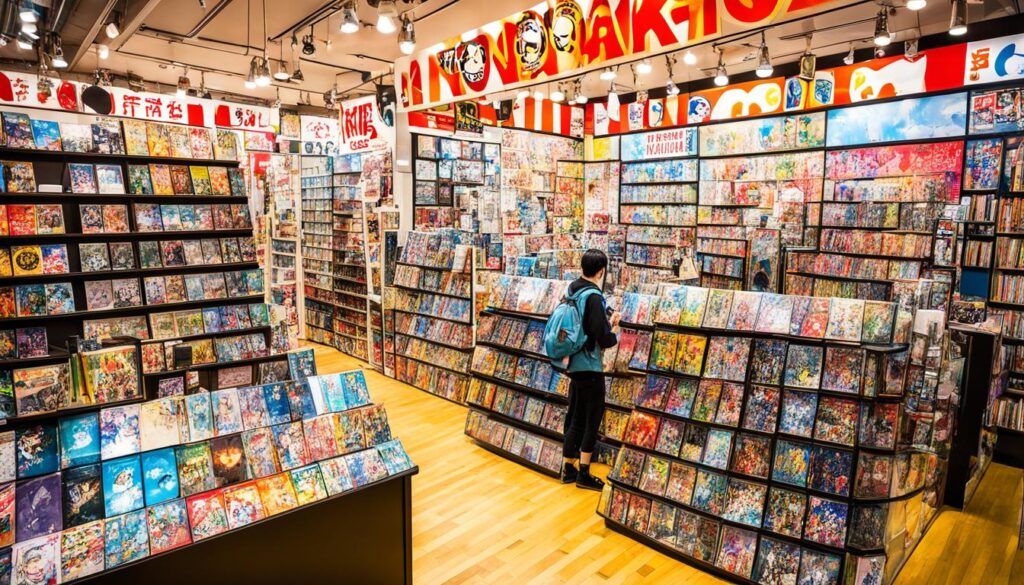
This complex has over 300 shops, offering a wide array of anime goods. More than 100 shops focus solely on otaku needs. That makes it a go-to place for collectors.
Unparalleled Variety
Nakano Broadway stands out with its variety. Most anime and manga shops are on floors 2 to 4. This layout makes it a haven for fans.
Mandarake is a big hit there, with 27 stores. Started in 1980, it now has a vast collection of figurines, games, and more. It’s a one-stop shop for anime lovers.
Henya is perfect for unique, retro finds. They offer items from the ’30s to the ’80s. It’s a great spot for those who love the old days.
For gamers, Galaxy on the second floor is heaven. It’s full of rare video games from the ’80s. They have everything from classic consoles to special editions.
Figurines Galore
At Special 4, figure lovers will be in paradise. This shop has rare figures, gacha toys, and more. Its Nendroid collection is very popular.
Indulge in Manga and Souvenirs
Manga fans will love Nakano Broadway. There are many shops selling second-hand manga. You can find all sorts of titles and genres.
You can also pick up anime souvenirs. From keychains to t-shirts, they have items for every fan.
It’s best to visit Nakano Broadway from 1 pm to 7 pm. This is when most shops are open. Remember, Wednesday might have some shops closed. Weekdays, except Wednesday, are better if you want less crowd.
Nakano Broadway is becoming a top spot for otaku collectors. Its wide variety of items attracts many. It’s a must-visit for any anime lover.
Discovering Odaiba: A Great Otaku Haunt
Odaiba, also known as ‘Daiba’, is loved by many. It’s a hot spot for young people in Tokyo. This lively part of the city is full of fun things to do, from shopping to exploring museums and art galleries.
The big mobile Gundam suit is a key feature here. It’s a large replica that moves and makes sounds. Visitors are wowed by its size and how real it looks. Any fan of otaku culture should check it out.
Odaiba also offers great places to shop for otaku items. You can find manga, anime goods, and other collectibles in the themed stores here. It’s perfect for those who love otaku culture.
When you get hungry, Odaiba’s food court is the place to be. It has food from Japan and around the world. There are lots of choices, so everyone can find something they like. Mealtime in Odaiba is always fun and lively.
Odaiba’s own Statue of Liberty adds to its unique feel. It shows how much the area is loved globally. From the famous Gundam suit to the fun shopping and eating spots, Odaiba captures the spirit of otaku life well.
If you’re into otaku or are curious about it, Odaiba is a must-visit. It’s an exciting place to dive into Japanese pop culture. You can shop, eat great food, and make great memories here.
Unleashing Your Inner Otaku Through Karaoke
Karaoke is more than fun; it’s how otaku fans show love for anime. They sing songs about their favorite characters. This lets them feel like stars and connect with others who love anime.
In Japan, karaoke is different. It’s focused on anime songs. These special places let otaku sing their favorite anime tunes.
You can sing classic anime songs or the latest J-pop hits. No matter what you like, there’s a song for you to sing. You’ll feel like you’re part of the anime world.
For instance, there’s Anison Karaoke Bar Z near Nakano Broadway in Tokyo. It’s for otaku who love anime songs. You’ll find a huge selection of these songs to sing.
Karaoke at events like Con+Alt+Delete (CAD) is especially fun. It brings fans together. At these events, you can sing and act out as your favorite anime characters.
Whether you sing solo or join a group, it’s all about enjoying anime through music. These events are great places to celebrate your love for anime, meet new friends, and make great memories.
If you love anime and singing, karaoke is for you. With many places to sing anime songs, you can truly share your anime passion through music.

Beyond Tokyo: Otaku Culture Across Japan
While Tokyo is the heart of otaku culture, its influence spreads far. In Japan, fans can find places to enjoy their hobbies all over. This allows people to completely dive into what they love across the country.
Exploring Kita-Kyushu: A Manga Lover’s Paradise
Kita-Kyushu, found in the southwest, is perfect for manga lovers. It hosts the Manga Museum, which explores the history of manga. This museum is filled with manga from different genres, famous stories, and characters.
The city itself is alive with manga-themed events. Kita-Kyushu is a key spot for anyone wanting to explore otaku culture more deeply.
Sapporo: Where Manga and Anime Come to Life
Sapporo, the capital of Hokkaido, is known for its beauty and culture. Each year, it celebrates otaku culture with its Snow Festival. During this time, visitors can see snow sculptures of popular manga and anime figures.
These sculptures are detailed and draw fans from around the globe. For otaku fans, Sapporo is a place where art, nature, and fantasy worlds meet.
Otaku culture is growing and spreading far and wide. Cities like Kita-Kyushu and Sapporo show how big its reach is. They have become beacons for fans from Japan and elsewhere.
With places like manga museums to snow art, otaku culture is integrated into different cities. This creates special moments and places for fans to unite and enjoy their interests.
The Rise of Otaku Culture in the Czech Republic
Since the late 1990s, the Czech Republic has seen a rise in otaku culture. This growth was thanks to the Internet and personal computers. It has built a big community of fans who love manga and anime.
These fans meet at gatherings, meetings, and conventions. These events bring thousands together every year. It shows how big and popular otaku culture has become in the Czech Republic.
Otaku fans in the Czech Republic are very dedicated and love what they do. About 10,000 of them spend a lot of time on their interest daily. They also attend many meetings and conventions.
Czech otaku fans really love items related to manga and anime. They buy a lot of merchandise, like posters and figurines. This buying power has helped otaku culture to grow in the Czech Republic.
The Czech otaku community is open and welcoming. They accept new people and celebrate differences. This makes their culture very lively and welcoming.
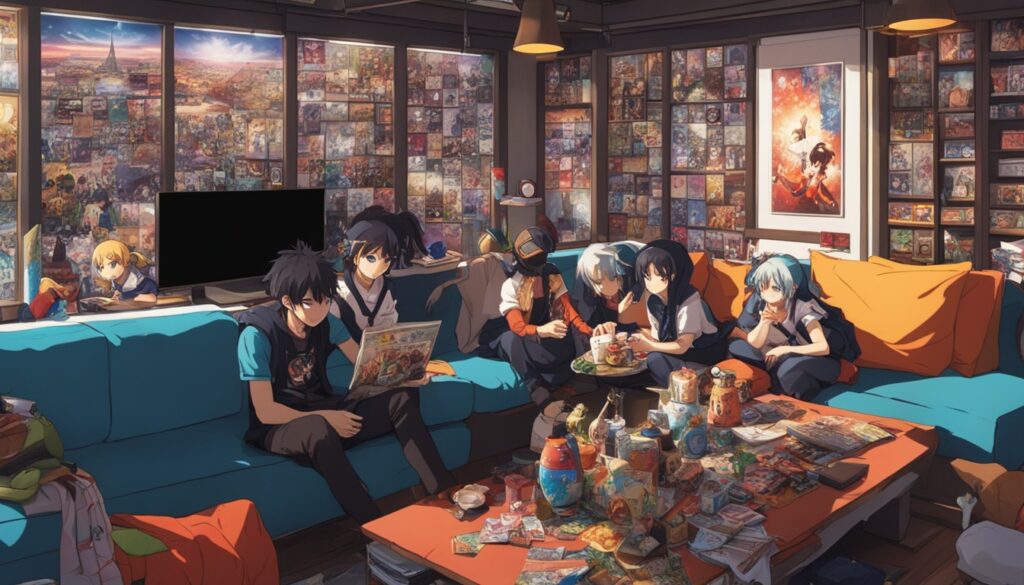
Otaku culture has grown beyond Japan to touch many global industries. It has led to interesting collaborations that impact popular culture. For example, Takashi Murakami worked on Kanye West’s ‘Graduation’ album art.
Not just music, this culture has also influenced significant figures in art and entertainment. Artists and musicians like Lil Yachty and Nicki Minaj have shown their love for otaku culture in their work.
The Czech Republic’s adoption of otaku culture has significantly impacted the global scene. With its growing love for manga and anime, the nation plays a big role in keeping otaku culture vibrant and popular worldwide.
| Statistics | |
|---|---|
| Number of anime and manga festivals and conventions held annually in the Czech Republic | Several |
| Estimated number of manga and anime fans in the Czech Republic | Up to 200,000 |
| Percentage of manga and anime fans considered real and active otaku fans | Approximately 10% |
| Number of active otaku fans in the Czech Republic | Around 10,000 |
Manga and Anime: The Origins of Otaku Culture
Manga and anime form the heart of otaku culture. This phenomenon has deep roots in Japan’s history. Manga are Japanese comic strips, and anime are animated films and shows. These have captured hearts globally, influencing our popular culture greatly.
Japan’s love for manga and anime started in the 19th century. It quickly found a fanbase, leading to a subculture centered on passionate love and connection. Otaku culture, with its variety and dedicated followers, was born from the unique stories and visuals in manga and anime.
In Japan, the love for manga and anime grew into a big part of society. It became known for intense fandom and obsession. This subculture reflects Japanese norms and the school system. Traits like intense love for anime, especially after works like Mobile Suit Gundam, became key to the otaku identity.
Yet, otaku culture faced challenges due to negative stereotypes. A big setback was the 1989 “Otaku Murderer” case, which worsened its image. Despite this, otaku culture stood strong, and fans proudly wear the badge of “otaku.”
The term “otaku” has a unique history. Enthusiasts in the early 1980s used it for fans who were part of big social networks for manga and anime. It gained more use through works like the anime Super Dimensional Fortress Macross. There, the term “otaku” was used in a respectful way by the creators to honor their fans.
Over time, at events like comic markets and fanzine meetings, the term “otaku” became popular as a sign of camaraderie. Even though negatively viewed in the media, many fans embraced the term. They used it as a way to jokingly show their deep love for manga and anime.
While otaku culture began in Japan, its influence is felt worldwide. Manga and anime’s global fame introduced the term “otaku” to fans around the world. Despite its less positive meaning in Japan, for these fans, it symbolizes their shared joy in Japanese pop culture.
The economic impact of otaku culture is impressive. In 2005, it was estimated to be ¥2 trillion (US$18 billion) in Japan. This number shows the huge popularity and market for manga and anime.
The foundation of otaku culture is the captivating world of manga and anime. Today, this culture thrives, bringing together a wide range of interests. Manga and anime continue to shape this vibrant subculture, making a lasting impact on fandom worldwide.
| Statistics | Year |
|---|---|
| Percentage of Japanese teens who self-identified as otaku | 2013 |
| American Gen-Zs who identified themselves as anime otaku | July 2022 |
| Economic impact of otaku in Japan | 2005 |
Exploring the Role of Otaku Expertise
The otaku subculture is defined by a deep passion and knowledge. It stands out in the cultural crowd. While most subcultures push back against society, otaku culture embraced a different role. It became a place for people to meet, dream, and connect over shared interests.
Post-WWII Japan saw the rise of otaku culture. As traditional resistances lost their spark, otakus found comfort in their hobbies. Their deep knowledge of their interests gave them a sense of belonging. They felt at home in a group that valued what they knew.
One major part of being an otaku is loving things like anime, manga, and video games. Fans dive deep into these fictional worlds. They connect closely with the characters and stories. This passion leads to a special way of interacting with these forms of media.
Being deeply knowledgeable in otaku subjects helps resist against cultural norms. By diving into fandoms, they redefine how to enjoy culture. Their expertise lets them see media in new ways. They craft tales and meanings that match their own lives.
The otaku subculture proves that not all resistance is straightforward. It creates its own space for self-expression. This space welcomes everyone who wants to be a part.
Otaku culture is more than just enjoying media. It creates communities that offer friendship and support to those on society’s fringes. Otakus use their expertise to build these welcoming places. Here, everyone’s interests are valued and shared.
Expertise is key in otaku culture. It helps fans connect, enjoy their interests, and grow. The otaku world thrives because its members are passionate and knowledgeable. It’s a place that brings together diverse individuals who love all things otaku.
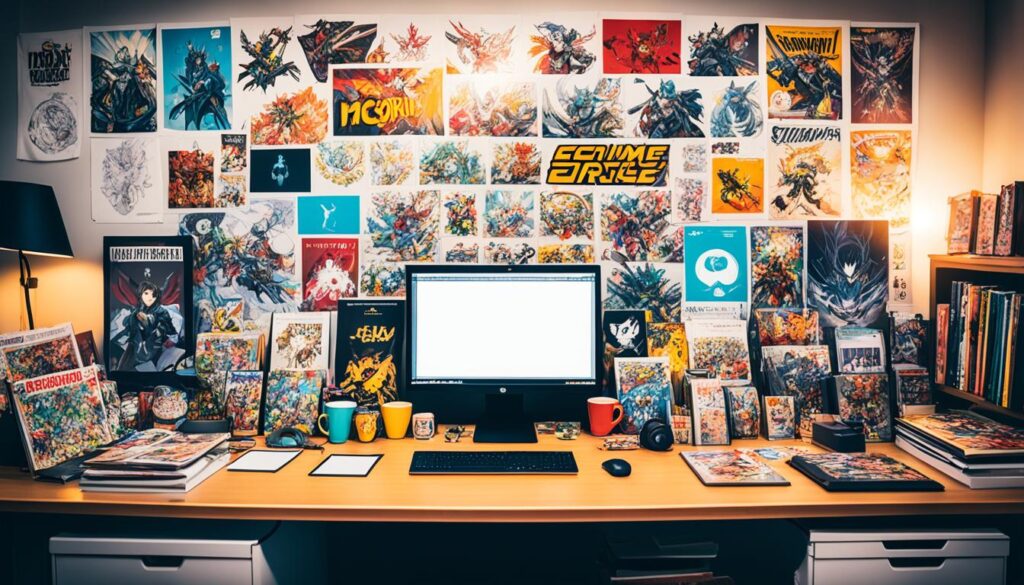
Stay tuned for a closer look at how otaku culture influences art, entertainment, and our world.
The Inclusion of Women in Otaku Culture
Women have played a big role in otaku culture, creating their place in the subculture. A key group in this culture are fujoshi. This term describes women who love romantic content, especially in the boy love genre. They get into stories about the relationships of male characters and enjoy the deep feelings and rich stories in these plots.
This strong push for boy love stories is changing the former boy’s club image of otaku culture. Fujoshi fans offer a new viewpoint and a wider scope of interests. By doing so, they break away from the usual norms and love the storytelling in their favorite shows.
But there are still challenges in fully including women in otaku culture, especially in genres like shoujo anime. Some of these genres might not always show women in the best light. They can fall back on old-fashioned male dream ideals, which can strengthen stereotypes.
Yet, magical girl anime, a type that’s part of shoujo anime aimed at young girls, presents a positive exception. These animes use light-hearted yet thoughtful stories to talk about real issues. These shows are like beloved American cartoons such as My Little Pony and Winx Club. While they usually avoid overly sexual characters, some attempts at this can still be seen.
However, shonen anime does more for its male characters, often leaving its female characters in the background. This can lead to female characters being shown in a sexual way, a point of contention within the community.
“In Naruto, Sakura Haruno was criticized for focusing too much on her male friends and lacking her own development. The show’s creator eventually acknowledged this, expressing a wish to portray more of the ‘real’ her.”
Another anime that faced criticism is Boku No Hero Academia for its sexualization of young female characters. For example, overly tight clothes and certain characters acting inappropriately towards girls have raised concerns.
This sexualization issue in anime is not only about the entertainment. It can discourage women from seeking powerful roles in real life, affecting fields like politics. Such portrayals might limit how women are seen and treated in leadership roles.
Yet, the growing presence of women within otaku culture and the call for more diverse representation is a positive sign. The rise of female otaku is broadening the community, challenging the old ways, and making it more welcoming to all.
Female Representation in Otaku Culture
| Anime | Representation |
|---|---|
| Kuragehime | Highlights the lack of portrayal of female nerds in a positive light within otaku culture |
| Naruto | Sakura Haruno’s character initially focused on her male counterparts, limited development |
| Boku No Hero Academia | Criticism for extreme sexualization of female characters, portrayal of minors |
The Evolving Role of Akihabara in Otaku Culture
Akihabara was once the heart of otaku culture. However, its role has changed over time. It’s still important, but areas like Ikebukuro and Nakano offer more to otaku now. Online, social media lets otaku from everywhere come together.
In the 1980s, Akihabara was famous for its many appliance shops. Back then, it handled 10% of Japan’s demand for appliances. But as time passed, more shops started selling computer and electronic parts instead.
The big change came in 2008 with a terrible attack. This incident marked the end of a popular walking area that had been there since 1973. In 2011, that area was opened again for people to walk but without the shows it had before.
Costly office buildings began to appear, changing Akihabara’s look. This made the otaku feel of the place fade a bit. Still, many tourists visit for its famous anime and otaku culture. They enjoy buying figures and other anime items.
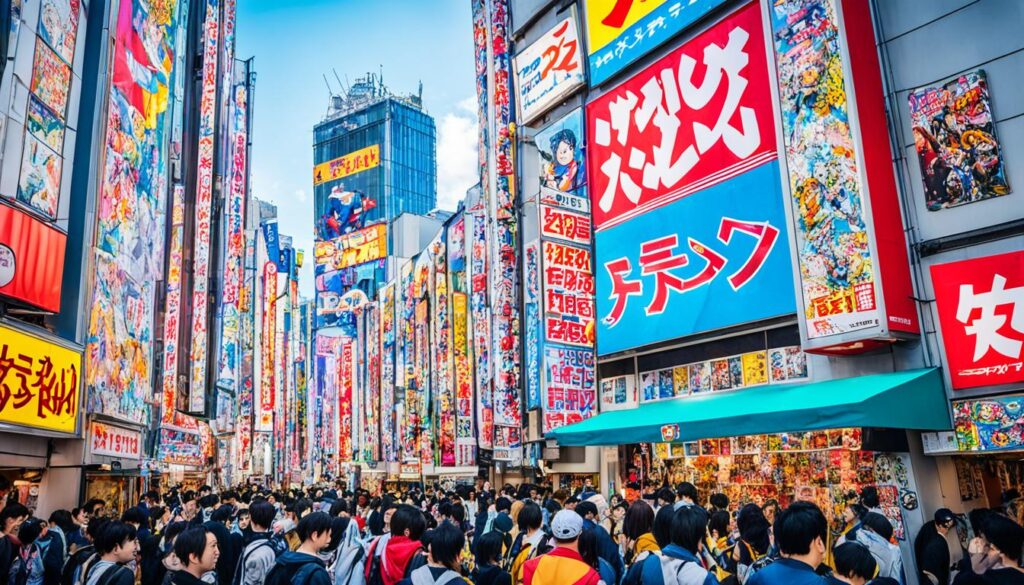
Though Akihabara is not as strong as before, it’s still a big deal for otaku. It’s evolving, showing how otaku culture is growing. As a big part of Japan’s pop culture, Akihabara remains key in the otaku world globally.
Cultivating Otaku Culture in the Czech Republic
Otaku culture from Japan has spread worldwide, capturing the hearts of many. The Czech Republic is among those spots, with a lively otaku community. Enthusiasts gather for events, creating a place to share, connect, and be creative.
In the Czech Republic, like in Japan, otaku fans meet up to enjoy their passions together. At these events, they talk about anime and manga, swap fan items, and embrace what they love. This builds a feeling of togetherness and friendship, making the community strong.
Conventions are key in Czech otaku culture. They unite fans from across the country for fun activities like cosplay and talks about their favorite shows. These events immerse attendees in the otaku world, making the experience unforgettable.
The Czech Festival stands out, held with Japan’s embassy to celebrate Czech and otaku culture in Tokyo and Kansai. It strengthens cultural ties and offers a place for mutual understanding and enjoyment.
Otaku culture has even influenced broader Czech culture. It’s found in music, art, and how people dress. This shows how deep its impact goes.
In brief, the Czech Republic has warmly embraced otaku culture. They celebrate with events that highlight their shared interests and creativity. This highlights the global reach and the creative power of otaku fans.
Otaku Culture and Subcultural Resistance
The link between Otaku Culture and Subcultures is fascinating. Otaku culture began after World War II. It developed more during the sixties, following student protests. These young upper-class men tried to fight the power but couldn’t.
Originally, otaku culture was for upper-class men who felt out of place. This changed in the U.S., where many educated middle-class young people joined in. They didn’t fit the typical gender roles. They got into otaku stuff more as a way of fitting in, not battling against the mainstream.
In the 2000s, there was a big rise in women otaku. For them, otaku culture is a fun escape. Female otaku focus more on the characters’ emotional connections than their looks. They’re very active in driving otaku culture forward today.
“At Comiket, the largest fan comic convention in Japan, the first two days are dedicated to female content, while the last day focuses on male content.”
Otaku culture has changed a lot lately. Akihabara was once its heart but is less important now. Places like Otome Road and online spaces are now big for otaku. Akihabara itself has become more of a fan culture theme park thanks to media and tourism.
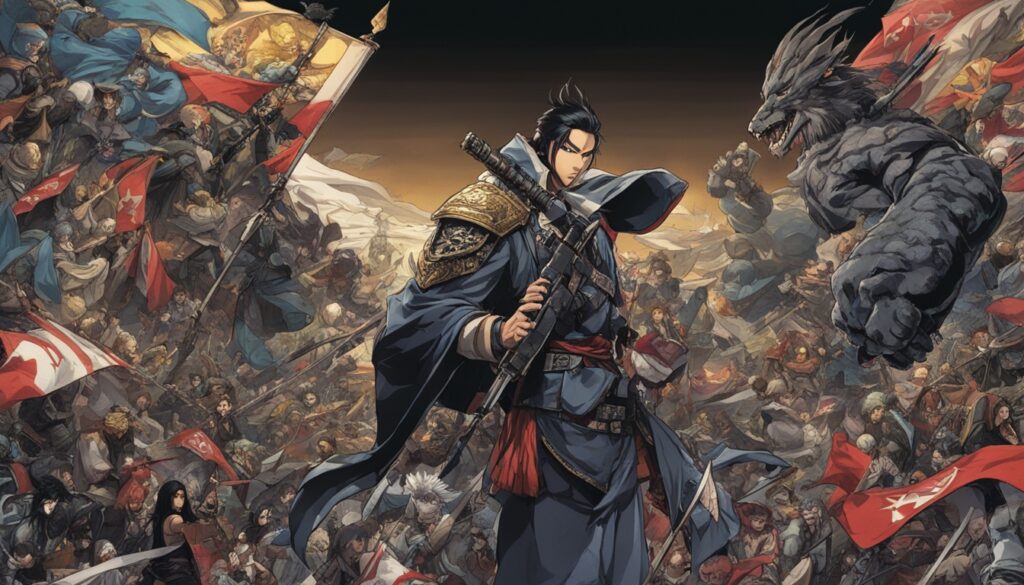
The Complexities and Fluidity of Otaku Culture
Otaku culture isn’t a single thing. Its fans have different reasons for being part of it. Some researchers like Mizuko Ito have looked into this deeply. They’ve studied how young people in Japan and the U.S. interact with media and tech.
The 1980s marked the beginning of otaku culture being widely known. Since then, it’s grown in different ways. By the early 2000s, there was more focus on the sexual side. In the 1970s and 1980s, becoming an otaku was a big deal in Japan.
People in Japan might worry about their youth and otaku culture. But, it keeps getting more popular, not only in Japan but all around the world. It has a major influence on global culture and the subcultures within it.
The Cultural Geography of Otaku Culture
When we look at otaku culture’s cultural geography, we see Akihabara isn’t the only key place anymore. Places like Ikebukuro and Nakano have become important too. They offer more choices for otaku fans.
Ikebukuro’s Otome Road, for example, is known for its female otaku culture. This area lets women freely share their interests. Otome Road is now a big draw for female fans, reducing Akihabara’s past influence.
Online spaces have also changed how otakus meet and share. The internet and social media make connecting over hobbies easy. Forums and online events are now major places for otaku to mingle.
Akihabara, however, still has a special place in otaku history. It remains a popular spot full of nostalgia and places to explore. But it’s changed; now it welcomes a wider crowd, not just hardcore fans.
The Evolving Role of Akihabara
Akihabara’s transformation shows the bigger changes in otaku culture. It stands for fan culture generally now. Akihabara is about inspiration for all fans, not just a meeting place for otaku.
Now, Akihabara, Ikebukuro, and Nakano coexist, offering different experiences for fans. Each area has its own feel, catering to diverse fan interests.
Otaku culture is always changing, moving out of Japan too. With fans worldwide loving anime and manga, new otaku hubs are popping up. Both physical places and online groups are shaping otaku culture in exciting ways.
Conclusion
Otaku culture began in the late 1970s and early 1980s, going way beyond just anime and manga. It quickly became a big part of Japan’s social scene and then spread worldwide. This cultural impact can be seen in many areas, from media and technology to the birth of unique communities.
Otaku culture is known for drawing in people from all walks of life, bringing them together over shared passions. Early otaku were into science fiction. But over time, their main love switched to manga and anime, which is now a very popular interest. This change has influenced the creation of books, films, and art that explore fan cultures.
While some might think otaku are just quiet and shy, they’re actually quite active in their communities. They love making, collecting, and talking about manga, anime, and its merchandise. With the Internet, otaku culture has exploded, leading to the creation of new ways of sharing, like websites and computer graphics.
Starting on the fringes, otaku culture has now become a major international phenomenon. Despite being mainly popular among those born between 1950 and 1960 in Japan, it continues to grow. Now, it attracts people worldwide, uniting them over shared interests that go beyond just anime and manga.
FAQ
What is otaku culture?
Otaku culture started in Japan. It’s all about everyone’s interests, like anime, manga, and even trains and computers.
Where are the main otaku spots in Japan?
Japan’s top otaku places include Akihabara, Nakano Broadway, and Odaiba.
What can I expect to find in Akihabara?
Akihabara is packed with technology shops, arcades, and model stores. You’ll find fun themed cafes and maid cafes too.
What is Nakano Broadway known for?
Nakano Broadway is a haven for collectors. It has shops full of figurines, manga, and video games.
What makes Odaiba a great otaku haunt?
Odaiba features a huge mobile Gundam suit. It also has great shops, a food court, and unique spots like a mini Statue of Liberty.
How is karaoke linked to otaku culture?
Karaoke lets otaku fans sing their favorite anime songs. They can choose from a wide range of anime themes in these places.
Are there otaku attractions outside of Tokyo?
Yes, places outside Tokyo, like Kita-Kyushu and Sapporo, have manga museums and anime-based sculptures. You can see these at the Snow Festival.
How has otaku culture gained popularity in the Czech Republic?
Otaku made it to the Czech Republic in the late 1990s. Now, Czech fans hold gatherings, meetings, and conventions to connect.
What are the pillars of otaku culture?
Manga and anime are at the heart of otaku culture. Manga is like a comic strip, and anime means animated films and series.
How did otaku culture emerge?
Otaku culture started as a place for imagination and escape. It welcomed those who felt different. Manga and anime were its earliest interests.
What role do women play in otaku culture?
Women have an important place, especially with “fujoshi.” These are female fans who focus on characters’ relationships and stories.
Has the role of Akihabara changed over time?
Yes, Akihabara’s role has changed. While it was the hub of otaku culture, now Ikebukuro and Nakano are more prominent. Akihabara is now a place for people with many interests to come together.
How is otaku culture cultivated in the Czech Republic?
In the Czech Republic, otaku fans meet at conventions and gatherings. These events are for sharing and celebrating their love for anime and manga.
What is the relationship between otaku culture and subcultural resistance?
The connection between otaku and resistance is intricate. Though some parts started as resistance, motivations among otaku fans can differ when it comes to subcultures and resistance.
What is the cultural geography of otaku culture?
Otaku culture’s geography is about where it happens, like Akihabara. But places like Ikebukuro and Nakano also draw otaku fans with a unique, more underground vibe.
How has otaku culture made a global impact?
Otaku culture has spread worldwide, influencing media, technology, and uniting people in unique communities. Both Japan and the world have felt its impact.
